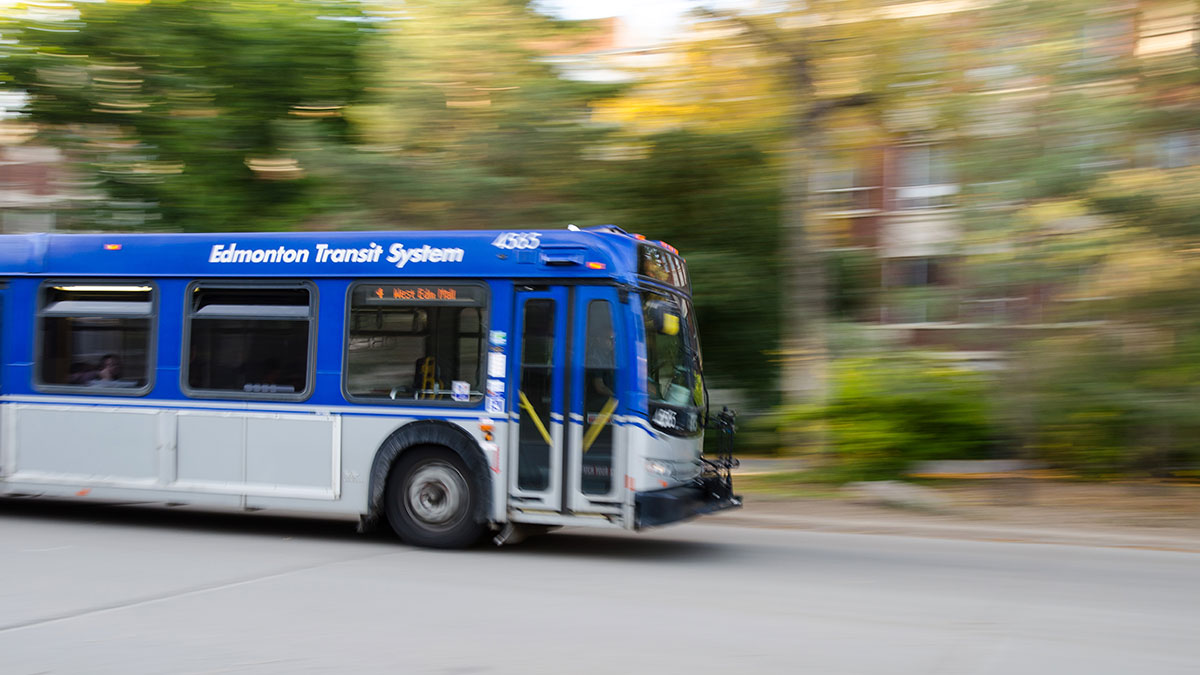 Randy Savoie
Randy SavoieEdmonton city councillor Aaron Paquette prompted public intrigue when he asked city council to consider what it would take to provide free public transit, claiming it’s a basic necessity for a thriving economy.”
While the idea of any totally “free” public services may make some grimace, Paquette is onto something. Free transit is the next step for Edmonton in becoming a modern, accessible, progressive Canadian city.
Public transit is typically used by those who are already on restrained budgets, such as the elderly, immigrant families, and students. For example, University Station was the most-frequented transit station in ETS’ most recent Ridership Report, evidencing the significance of transit to students. These people are often unable to access vehicles, whether due to lack of funds or the physical inaccessibility of cars (for example, for those with limited eyesight or mobility).
In fact, End Poverty Edmonton highlighted providing free transit by 2021 as one of its key principles. For low-income individuals and households, free transit can make the difference between accessing work across the city, or having enough money to pay for groceries or rent.
Some may oppose government “handing out” free transit, claiming the service would be too costly. However, making transit free would likely eliminate certain costs, including those related to fee enforcement and ticketing.
Paquette also proposed ways to make up for costs, such as a property tax hike. While we tend to flinch at raising taxes, funding public services through taxation actually saves most families money in the long run. Under Paquette’s model, a family of four spends around $3000 on transit annually; with property tax hikes, they would spend $160 and everybody in the city would get free transit. Under raised taxes, the city would share the cost of providing a service that benefits everyone, rather than forcing individuals to assume the burden of paying for a public service.
The costs also wouldn’t need to be assumed all at once. In Calgary, the C-Train is free to ride in the downtown core, while travelling beyond downtown requires paying a fare. Edmonton could follow a similar model, eliminating some fees gradually to allow the financial burden to be more easily adopted. For example, even providing free LRT services while still charging for bus services would make travel to key areas of the city, like the University, downtown, or the south end, far easier.
Beyond financial concerns, free transit would benefit the city as a whole. Making transit more accessible would encourage vehicle-users to use the services more often, as it would eliminate both the irritation of paying transit fees as well as vehicle costs like fuel and insurance. More people using transit would also decrease rush-hour traffic, especially when LRT expansion is complete.
Perhaps most importantly, increasing transit ridership is environmentally responsible, cutting down on individual carbon emissions and Edmonton’s overall environmental footprint.
Free transit doesn’t need to be a socialist pipe dream. Cities in Europe, like Tallinn, the capital of Estonia, are already providing this service. Tallinn was so successful that free public transit experiments are now taking place across the whole country. Introducing free transit, even gradually, is key to modern cities that are welcoming and accessible to everyone.




